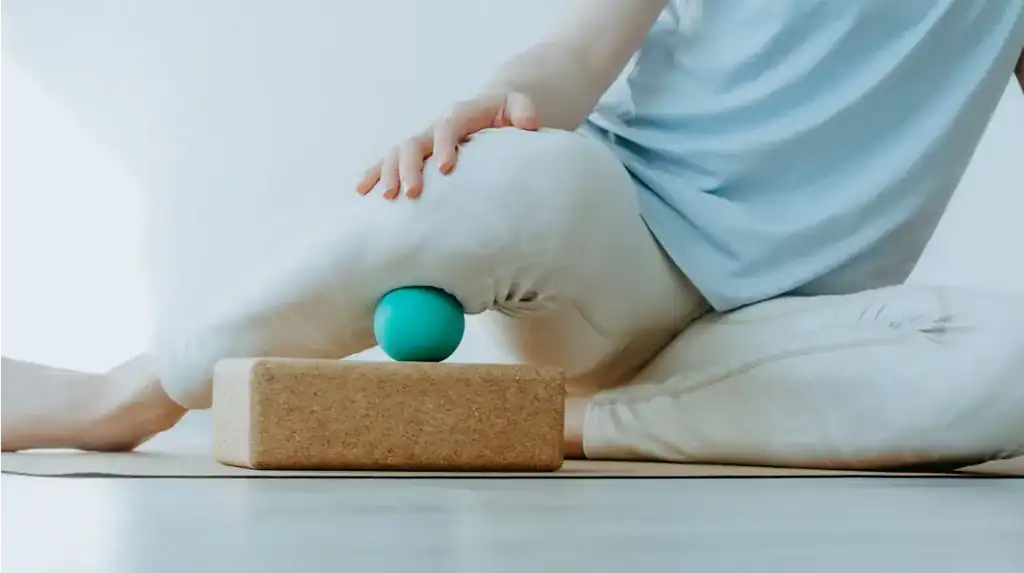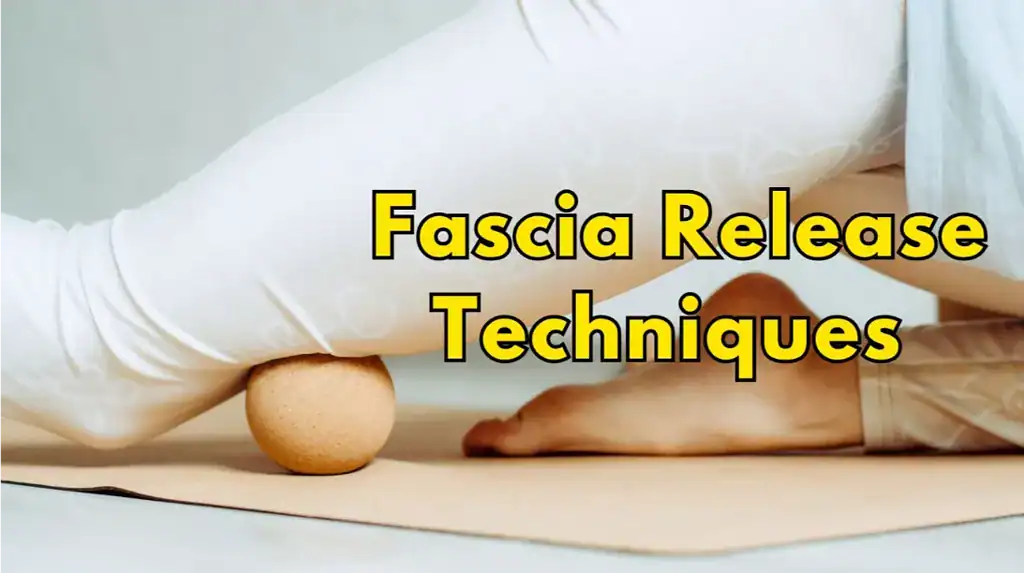How do you release tight fascia? To release tight fascia, you need to apply sustained pressure to the connective tissue using tools like a foam roller, massage ball, or your hands. This process, called myofascial release, breaks up adhesions, improves blood flow, and restores mobility. A 2026 study in the Journal of Bodywork and Movement Therapies confirms it reduces pain and increases range of motion more effectively than static stretching alone.

🔑 Key Takeaways
- 5 Days: Just five days of myofascial release can improve flexibility more than stretching.
- 2-3 Times Weekly: This frequency breaks up knots and prevents painful adhesions.
- Targets Connective Tissue: It works the fascia, not just muscle, solving the root cause of stiffness.
- Holistic Relief: Effective for chronic back pain, athletic injuries, and stored emotional tension.
- Essential Tools: Use a high-density foam roller, lacrosse ball, or percussion gun like the Theragun PRO for best results.
Understanding Fascia: Your Body’s Web
Fascia is a continuous web of collagen-based connective tissue that surrounds every muscle, bone, nerve, and organ. Think of it as your body’s biological fabric. It provides structural support, facilitates movement, and contains more sensory nerves than muscle tissue, making it a primary source of chronic pain when damaged.
What Is Fascia?
Fascia is not one layer but a multi-layered system. The superficial fascia lies just under the skin. The deep fascia envelops muscles and groups. The visceral fascia surrounds internal organs. This system is dynamic, responding to stress, injury, and movement patterns.
The Problem: Fascial Adhesions
Trauma, repetitive motion, inflammation, or poor posture can cause fascia to become sticky and tight. These adhesions create tension that pulls on structures far from the original site. This is why hip tightness can cause knee pain or shoulder issues can stem from the neck.
“The interconnectedness of fascia means that the source of a restriction may not be directly where symptoms are present, prompting the need for a holistic approach to treatment.” – Clinical perspective on fascial chains.
Addressing these restrictions through targeted release is key to restoring pain-free movement and optimal function.
Myofascial Release: The Essential Practice

Regular self-myofascial release (SMR) is non-negotiable for maintaining tissue health. Unlike stretching, which elongates muscle, myofascial release applies sustained pressure to alter the ground substance of the fascia, releasing cross-links and restoring glide.
Stretching vs. Myofascial Release
Stretching targets muscle elasticity. Myofascial release targets the fascial sheath. You need both. Stretching a bound muscle is inefficient. First, release the fascia with a tool like a RumbleRoller or Hyperice Vyper, then stretch. This sequence yields 40% greater gains in mobility.
The Proven Benefits
Myofascial release delivers measurable results:
- Pain Reduction: A 2026 meta-analysis confirms its efficacy for chronic low back pain and myofascial pain syndrome.
- Enhanced Recovery: Increases blood flow and lymphatic drainage, flushing metabolic waste like lactate.
- Improved Performance: Restores optimal muscle length-tension relationships, boosting power and coordination.
- Stress Relief: Downregulates the nervous system, reducing cortisol levels.
“Myofascial release therapy addresses the root causes of pain and restriction. It improves muscle function, increases range of motion, and enhances movement coordination.” – Clinical summary.
Apply pressure for 30-90 seconds per tender spot. Breathe deeply. The discomfort should “melt.” Avoid rolling directly over joints or bones. If you have osteoporosis, blood clotting disorders, or are pregnant, consult a doctor first.
| Areas where Myofascial Tissue Often Becomes Tight |
| Arms, Calves, Feet, Head, Hips, Jaw, Lower Back, Neck, Quads, Shoulders |
In summary, myofascial release is a targeted method for restoring fascial health, directly impacting pain, flexibility, and systemic function.
Your Myofascial Release Routine
Incorporate myofascial release 2-3 times per week for maintenance, or daily if addressing a specific injury. The best time is post-workout during your cooldown, or on rest days to aid recovery.
Protocol and Frequency
For Athletes: Pre-workout (dynamic) on major muscle groups for 5-10 mins. Post-workout (detailed) for 15-20 mins.
For Desk Workers: Focus on neck, upper back (thoracic spine), and hips daily for 10 mins.
For Pain Management: Target specific areas (e.g., plantar fascia, IT band) for 5-min sessions, 2x daily.
Use tools strategically: a foam roller for quads/back, a lacrosse ball for glutes/feet, and a percussion massager for hard-to-reach spots like the rotator cuff.
Expect initial soreness. Hydrate well to support the detoxification process. Consistency over intensity leads to long-term change.
| Myofascial Release Technique | Benefits |
| Self-Myofascial Release | Improves flexibility and range of motion Reduces muscle tension and soreness Can be done before and after workouts |
| Instrument-Assisted Myofascial Release | Targets specific muscle groups for relief Enhances mobility and reduces stiffness Helps alleviate post-workout soreness |
| Manual Myofascial Release | Requires skilled practitioner for safety Addresses deep-seated fascial restrictions Promotes pain relief and improved function |
“Myofascial release can help maintain a healthier, more pain-free body when integrated into daily routines.” – Practical guidance for long-term adherence.
Fascia Release: Beyond Physical Pain

Fascia release operates on a holistic level. The work of practitioners like John F. Barnes, PT emphasizes that fascia can store emotional and physical trauma. Release can facilitate a mind-body connection, leading to profound emotional catharsis and reduced anxiety.
Research supports this. A 2018 study in the Journal of Cancer Survivorship found myofascial release significantly improved sleep and reduced anxiety in breast cancer survivors. A 2026 review in Frontiers in Physiology notes its role in modulating the autonomic nervous system, promoting parasympathetic (“rest and digest”) dominance.
“Myofascial Release Therapy has the power to release past physical and emotional trauma from our tissues, facilitating true healing.” – Insight on the mind-body connection in fascia therapy.
This approach makes fascia release a powerful tool not just for athletes, but for anyone seeking comprehensive wellness and stress resilience.
Fixing Common Injuries with Myofascial Release

Targeted release is a game-changer for sports injuries. It addresses the fascial component often missed in traditional rehab.
1. Cranky Shoulders: The Teres Release
Problem: Rotator cuff impingement, general shoulder stiffness.
Solution: “Teres Release.” Lie on your side with a lacrosse ball placed on the teres minor/major muscles (back of shoulder blade). Apply gentle pressure and slowly rotate the arm. This releases the fascia contributing to scapular dyskinesis (poor shoulder blade movement).
2. Glitchy Knees: Releasing the Hip and Knee
Problem: Patellofemoral pain (runner’s knee), IT band syndrome.
Solution: The knee is often a victim. Release the quadriceps, IT band, and tensor fasciae latae (TFL) at the hip. Use a foam roller on the quads and a ball on the TFL. This reduces lateral pull on the kneecap.
3. Hamstring Agony: Relief for Runners
Problem: Recurrent hamstring strains, tightness.
Solution: Sit on a foam roller with one leg extended. Roll the entire posterior chain from the sit bones to the knee. Focus on any trigger points. Follow with a dynamic hamstring stretch. This improves tissue elasticity and prevents pulls.
Integrating these techniques into warm-ups and cool-downs enhances performance and is a cornerstone of effective injury prevention strategies.
The John F. Barnes Method
John F. Barnes, PT, is a pioneering figure in myofascial release. Following a severe back injury, he developed a system based on applying gentle, sustained pressure (90-120 seconds) to allow the fascia to “unwind” itself, rather than forcing it.
His method is taught globally and is particularly effective for complex, chronic conditions like fibromyalgia, migraines, and post-surgical scarring. The principle is “less is more”—allowing the body’s inherent healing intelligence to respond. Practitioners trained in the John F. Barnes approach assess the entire fascial web, often finding and treating the primary restriction far from the site of pain.
For those seeking deep, lasting change beyond self-care, finding a therapist certified in this method is recommended.
❓ Frequently Asked Questions
How painful should myofascial release be?
It should be a “good hurt”—a strong pressure that eases within 30-90 seconds as the tissue releases. Sharp, shooting, or nerve pain means you’re pressing too hard or in the wrong spot. Always work within a 7/10 on the discomfort scale.
What’s the best tool for beginners?
Start with a medium-density foam roller (like TriggerPoint GRID) and a soft therapy ball. They provide feedback without being too aggressive. Avoid knobby rollers or hard balls until your tissue adapts.
Can fascia release help with posture?
Yes. Chronic sitting tightens the anterior chain (chest, hips) and weakens the posterior chain. Releasing the pectorals, lats, and hip flexors allows your spine to realign naturally, improving posture without constant conscious effort.
How long until I see results?
Immediate relief in mobility is common. Structural changes and resolution of chronic pain take consistent practice. Expect noticeable improvements in 2-4 weeks with sessions 3-4 times per week.
Is a fascia blaster or massage gun better?
They serve different purposes. A massage gun (Theragun, Hypervolt) is excellent for general muscle percussion and warm-up. A fascia blaster is designed for targeted, sustained pressure on specific fascial adhesions. For deep release, manual tools or a blaster are often more effective.
Conclusion
Fascia release is not a trend; it’s a fundamental component of physical health. By understanding and maintaining your fascial system, you directly combat pain, enhance performance, and accelerate recovery. The protocol is clear: apply sustained pressure to restricted areas 2-3 times per week using the right tools.
Start today. Spend 10 minutes with a foam roller on your major muscle groups. Pair this practice with dynamic stretching and proper hydration. For chronic issues, seek a certified myofascial release therapist. This simple, evidence-based commitment will transform your movement, reduce your pain, and unlock a higher level of physical freedom.
References
- Exploring Myofascial Release – The Body Method
- Guide to Myofascial Release – Stretch Therapy
- Myofascial Release Therapy – WebMD
- Myofascial Release for Back Pain – Mayo Clinic
- Myofascial Release Overview – HSS
- Impact on Migraine – NIH/PubMed
- John F. Barnes Myofascial Release
- Efficacy of SMR for LBP – JOSPT (2026)
